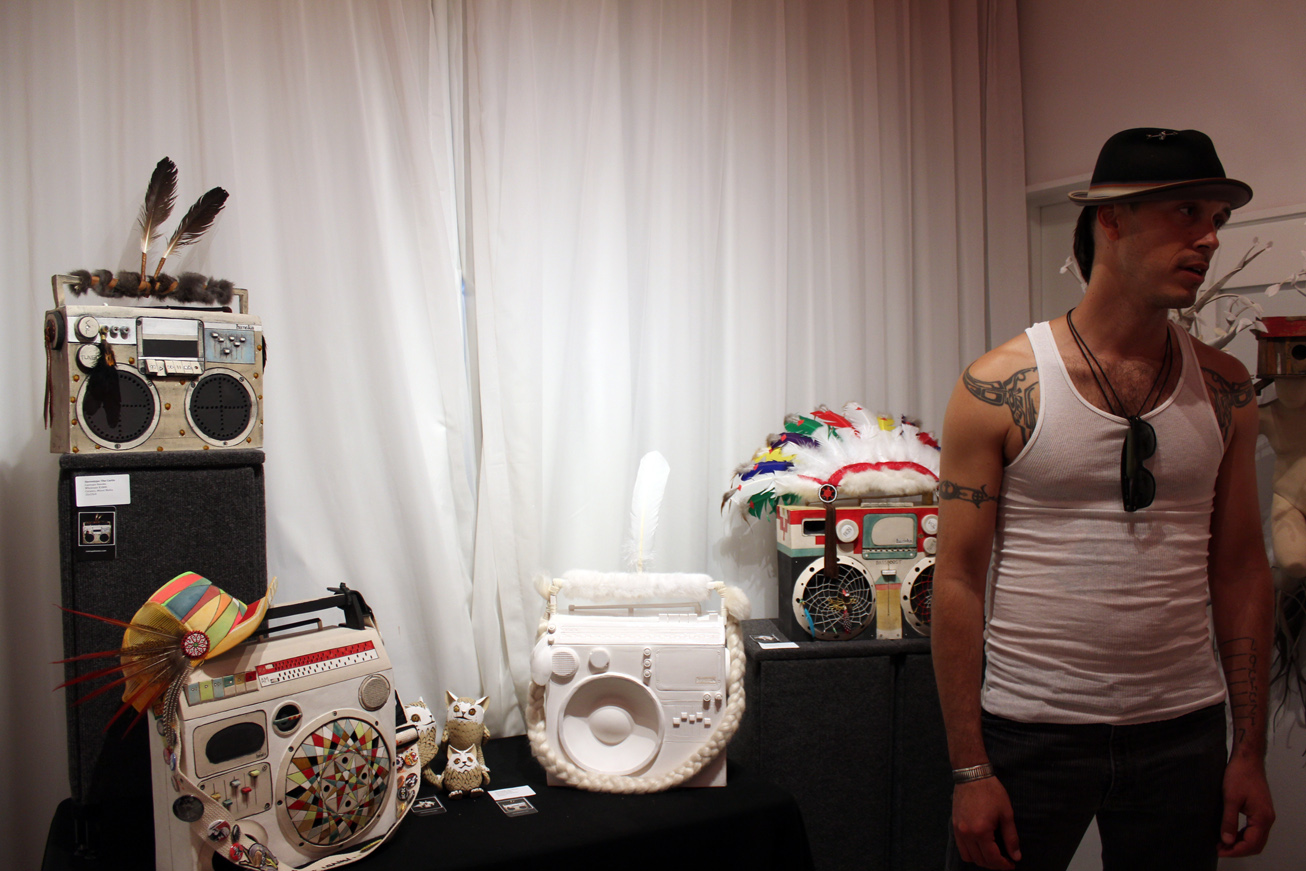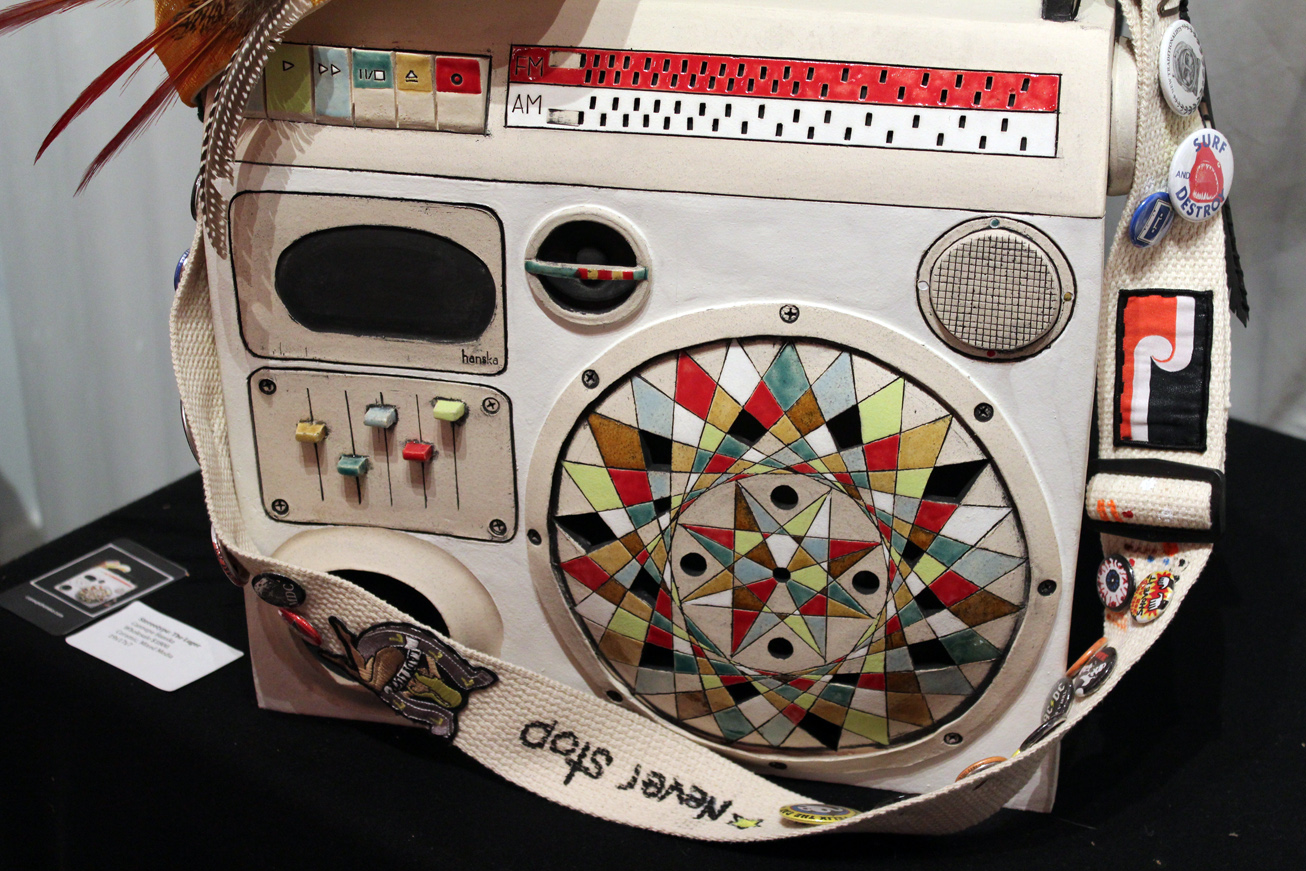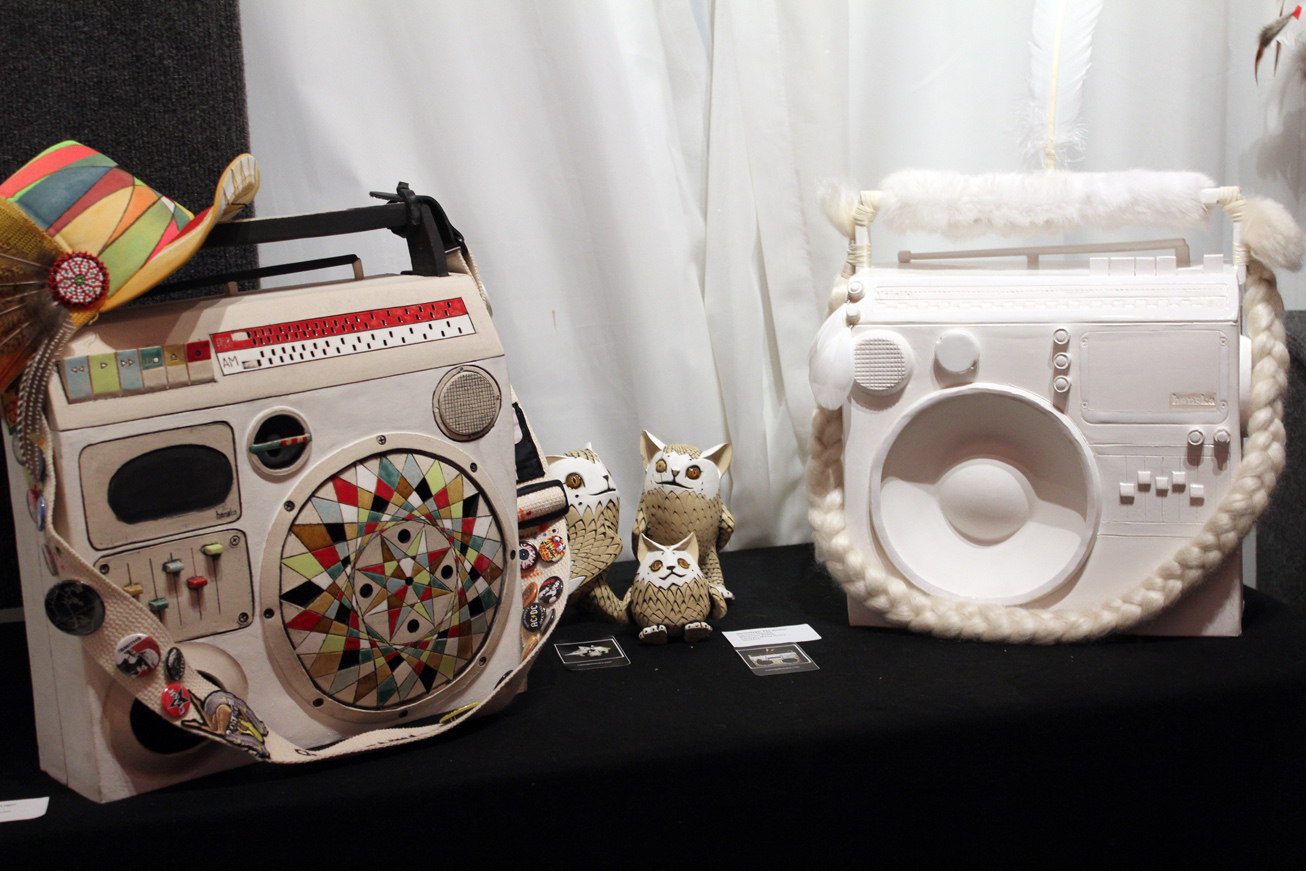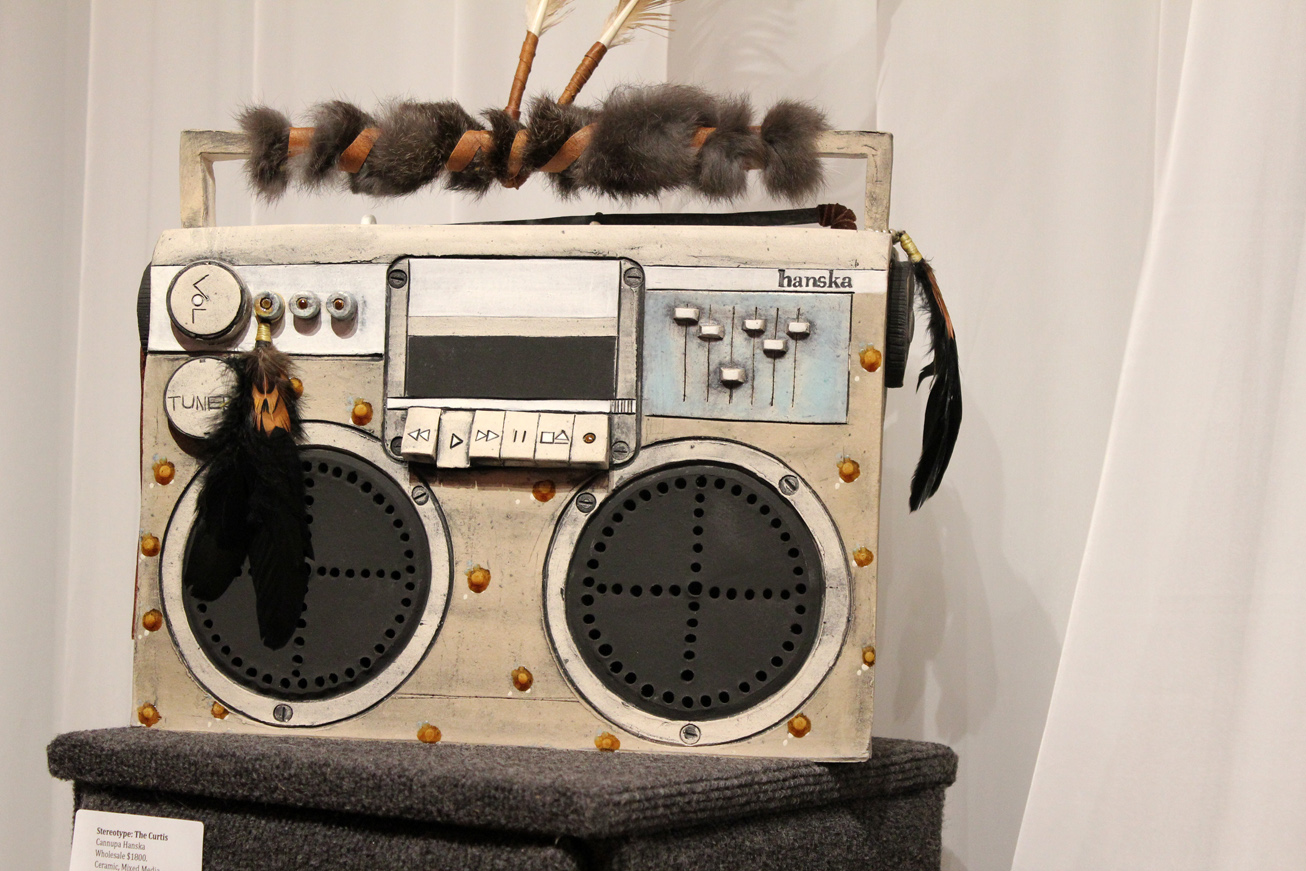MIAMI—Inaccurate and offensive depictions of Native American culture abound and are often so pervasive that the stereotypical portrayals come to be regarded as standard bearers. To address Native American stereotypes in pop culture, Cannupa Hanska Luger created a series of boom boxes—painted gems composed of ceramic and adorned with feathers. Each “stereo” tells a story, referencing an offensive incident or longstanding assumption, and artfully challenges it.

Artist Cannupa Hanska Luger with his “Stereotypes,” including “The Curtis,” at far left, adorned with two feathers sticking straight up.
The boom box sculptures along with a series of buffalo skulls by Luger, were on view at Select Fair, the contemporary art fair held at the Catalina Hotel during Art Basel Miami Beach. A member of the JCC Collective, Sante Fe-based Luger shared exhibition space at the fair with Jessica Osceola and Jamie Cross, the other two collective members.
All photos © Arts Observer

Detail of “Stereotype: The Luger.”

From left, “Stereotype: The Luger” and “Stereotype: The Stefani,” both 2012 (ceramic, mixed-media).
“The Luger” is the artist’s self portrait. If he was going to call others on the carpet, he thought it was important to scrutinize himself as well: “I, Cannupa Hanska Luger am but one filter understanding culture. If I am going to point the finger, I must point it back at myself. There is no way all of the layers of the Native American can be summed up in a single art piece. We as human being are multi-faceted as the interpretation of the star pattern depicts. Who we are is like a cut stone, each plane has an opportunity to reflect the light. However, it is the whole of the faceted stone that shines brilliant in the eye of the observer. I choose to recognize the splendor of the variety, the beauty of where we are now. Shining at every point between the romanticized ‘noble savage’ and the marginalized economic bastard. I recognize the value of tradition and the importance of adaptation.”

From left, “Stereotype: The Stefani” and “Stereotype: The Barrymore,” both 2012 (ceramic, mixed-media).
“The Stefani” was inspired by one of Gwen Stefani’s clothing collections that featured stereotypical Native American references.
According to Luger, “In 2012 [Drew] Barrymore was photographed on a film set wearing a chicken feather headdress, a Budweiser apron and throwing a peace sign. In this photograph, which was posted as her profile picture on Facebook, she represented a continuous obsession with Native American iconography as a fashion trend in mainstream culture.”

“Stereotype: The Curtis,” 2012 (ceramic, mixed-media).
“The Curtis” (shown above and at top) refers to the prominent legacy of ethnographic photographer Edward S. Curtis. On his website, Luger provides some context: “Edward S. Curtis (1868-1952) set out to take ethnographic photographs of Native Americans before they disappeared. Indulging his own creative whims as a photographer, Curtis would bring Native Regalia with him, staging his photographs and manipulated the image by posing people and objects to reflect his vision. In producing these staged photographs and sharing them with the mass colonial population his photos became source material for Native American culture, which was not a correct or truthful image. Through these photographs Curtis perpetuated the noble savage.”
And then Luger describes how his work responds to Curtis’s imagery: “This piece was inspired by the famous Curtis photo of Sitting Bull. But in order to supply the demand of his viewers back east, of the wild Indian covered in feathers and buckskin, Curtis manipulated the feathers atop Sitting Bulls head to be seen, pointing them straight up. Now the image of feathers upright on the head are a cultural icon. This image of Sitting Bull is so prominent in deciding Native American history that the image is even perpetuated in Native American culture today. This piece reflects on the stereotyped Native American culture as dictated or described by anthropological or external sources such as the photographs of Edward S. Curtis.”

